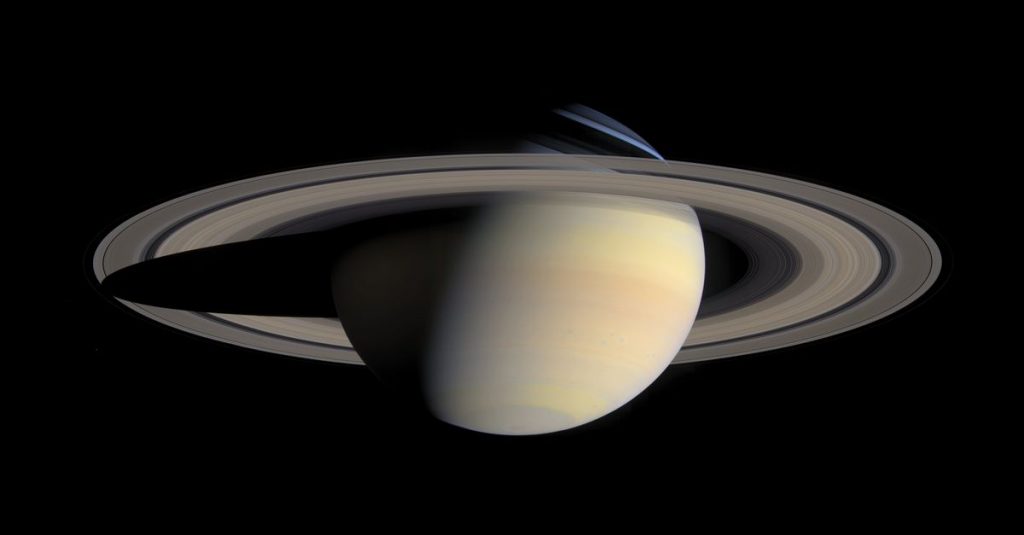
Mixing gas, ice and rock in the heart of Saturn
The heart of Saturn is mysterious. There is no hard boundary between the solid core and the rest of the planet. This core is much larger than previous estimates. To reach these conclusions, astronomer Christopher Mankovitch and physicist Jim Fuller, both of Caltech University, studied a wave in one of Saturn’s rings using NASA’s Cassini spacecraft. they published Monday results in the journal natural astronomy.
Saturn is the second largest planet in the solar system. Its diameter is about nine times the diameter of the Earth. The planet features amazing rings of ice and stone. Saturn, like Jupiter, is a gas giant. A giant planet without a solid surface. According to ancient ideas, the solid core of the gas giant is surrounded by a separate layer of helium and hydrogen.
But new measurements show that the heavy ice in the core and rock is mixing with helium and hydrogen. This mixture extends to about sixty percent of the entire planet. The portion of heavy rocks decreases outward. So there is no hard limit.
Cassini in Juno
Astronomers have previously estimated, using space probes, the interiors of gas giants Jupiter and Saturn. The way the planet’s gravity pulls on a space probe reveals something about the distribution of the different layers on the planet. For example, if all the mass is evenly distributed, the spacecraft makes a neat elliptical orbit. If the mass is unevenly distributed, the planet pulls slightly differently on the spacecraft in different places. NASA’s Juno spacecraft orbited Jupiter and Cassini orbited Saturn from 1997 to 2017.
Based on Juno’s data, astronomers suspected that the boundary between Jupiter’s core and lighter material is blurred. This was not known to Saturn. Cassini has not flown close to Saturn long enough to study the nucleus well; The question remained open as to what exactly the interior of Saturn would look like.
wave in the ring
To answer this question, American researchers studied a wave in one of Saturn’s inner rings. That wave moves through the loop like a sound wave. At a point in the loop, the particles first come close to each other, causing them to rise, and then move away from each other again. The motion of that wave, like the orbit of space probes, is influenced by the accretion of the interior of Saturn. The researchers studied those waves using Cassini’s observations. Then they looked at which model of Saturn’s interior could best explain the observed wave. The blurry core, without a sharp transition to lighter textures, fits the notes better.
“Good job,” says Daphne Stamm. She is a planetary researcher at Delft University of Technology. “It is impressive that researchers were able to penetrate one of the rings in the interior of the giant planet on the basis of a single wave.”
“Surprisingly, the study shows that there should be little vertical movement in the heart,” says Stam. “This does not correspond to the magnetic field around Saturn.” The idea is that the magnetic field is created by that vertical motion, like some kind of dynamo. “But it seems that this theory does not hold here.”
Stam thinks it’s important that the new insights tell us something about how quickly Saturn formed. The rate at which a small planet’s core attracts gas toward it can be read from its interior. And the faster the planet does it, the blurred the boundaries between the different layers.”
A version of this article also appeared on NRC on the morning of August 17, 2021

“Web maven. Infuriatingly humble beer geek. Bacon fanatic. Typical creator. Music expert.”
